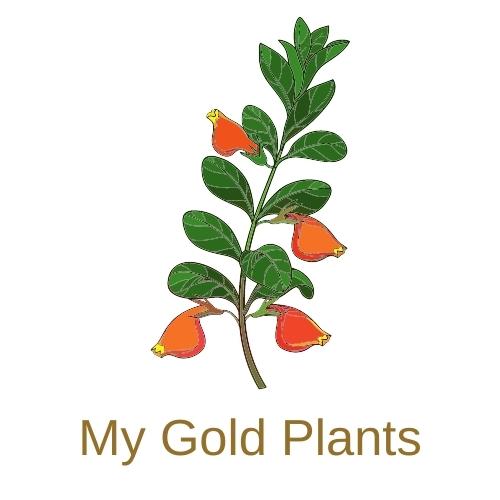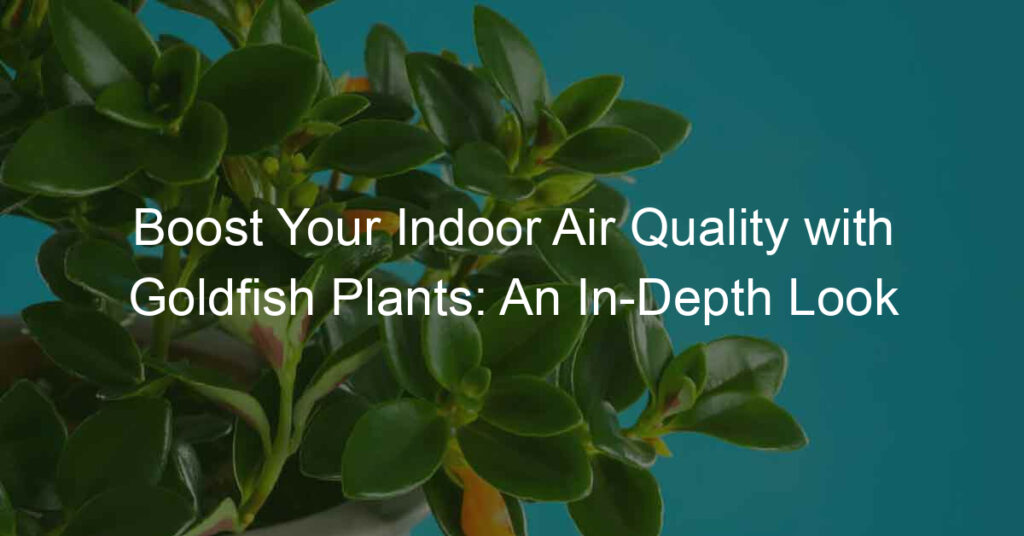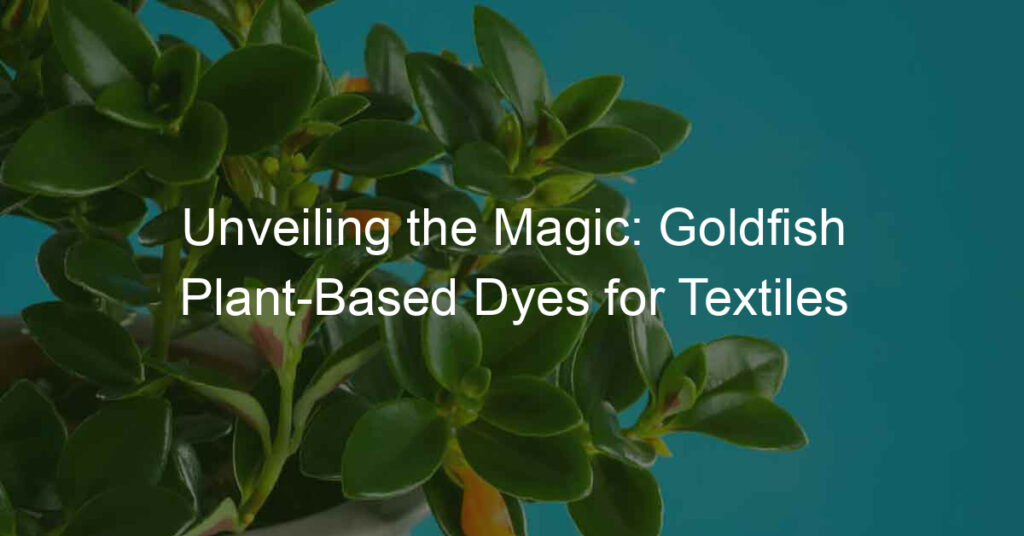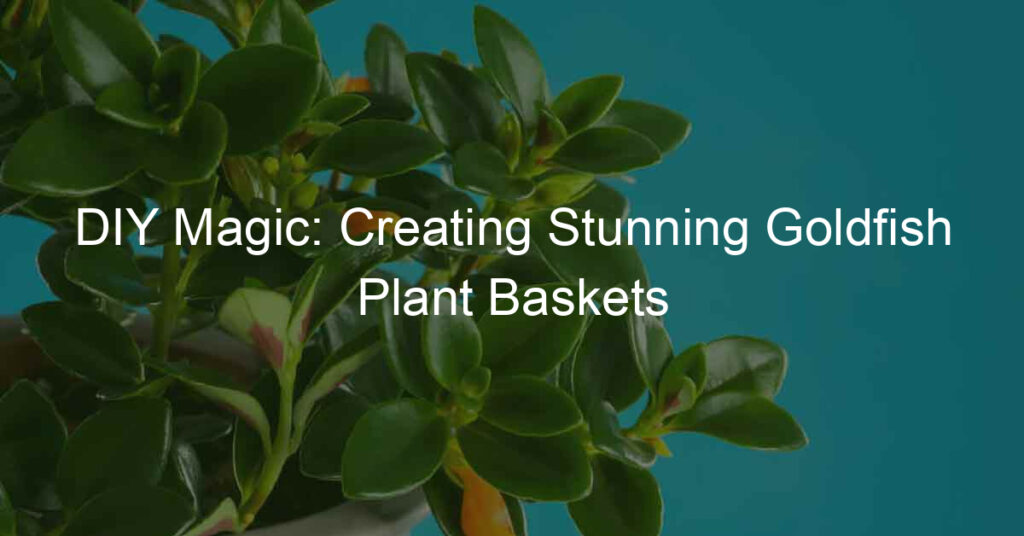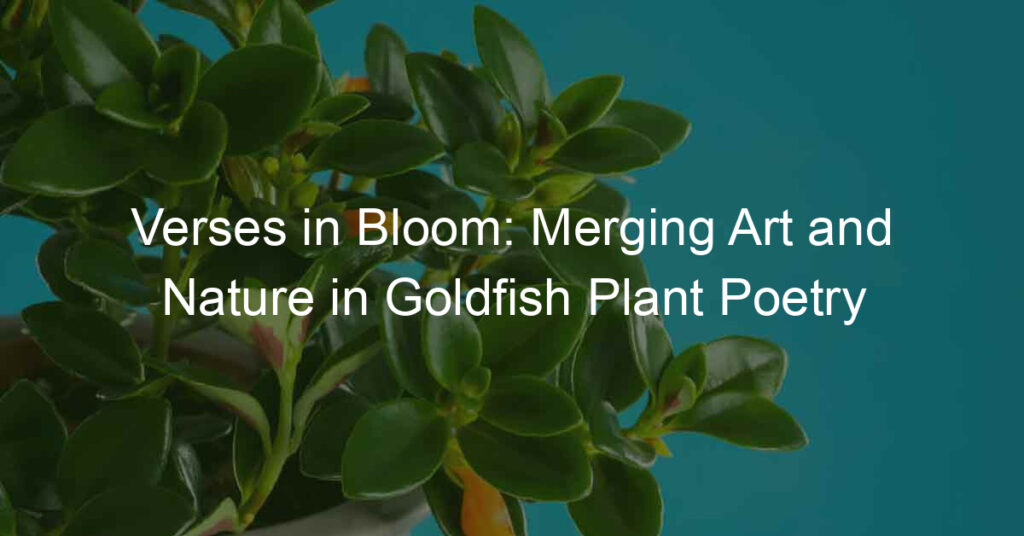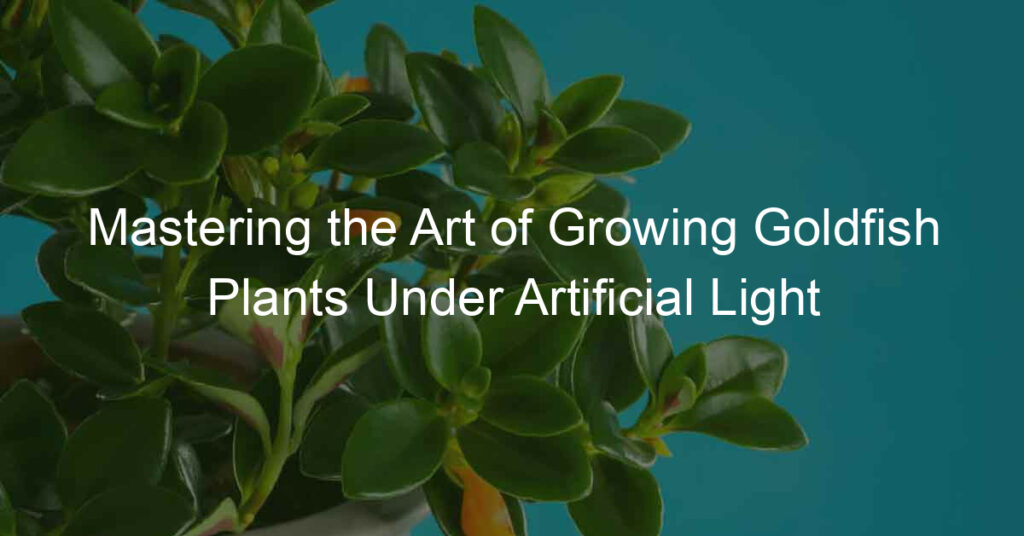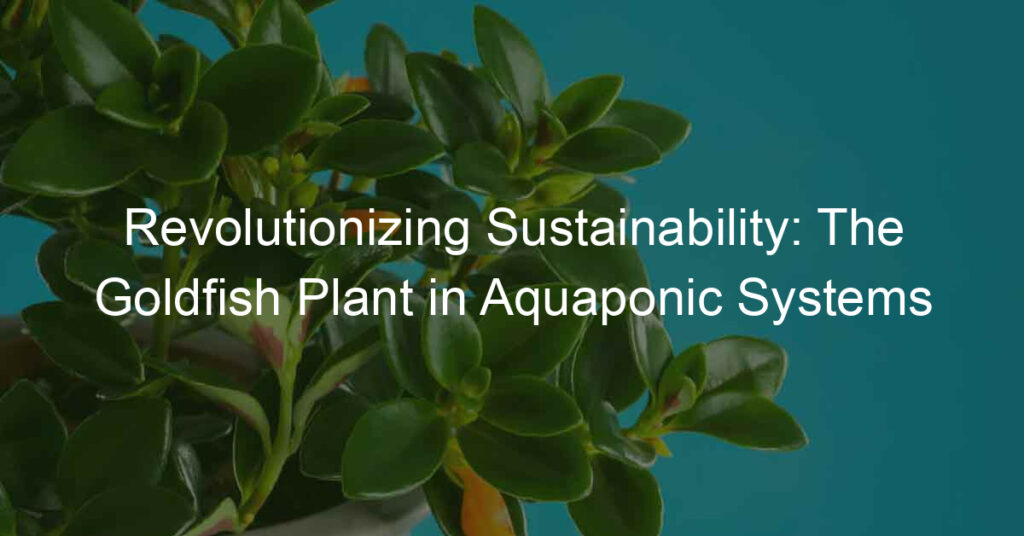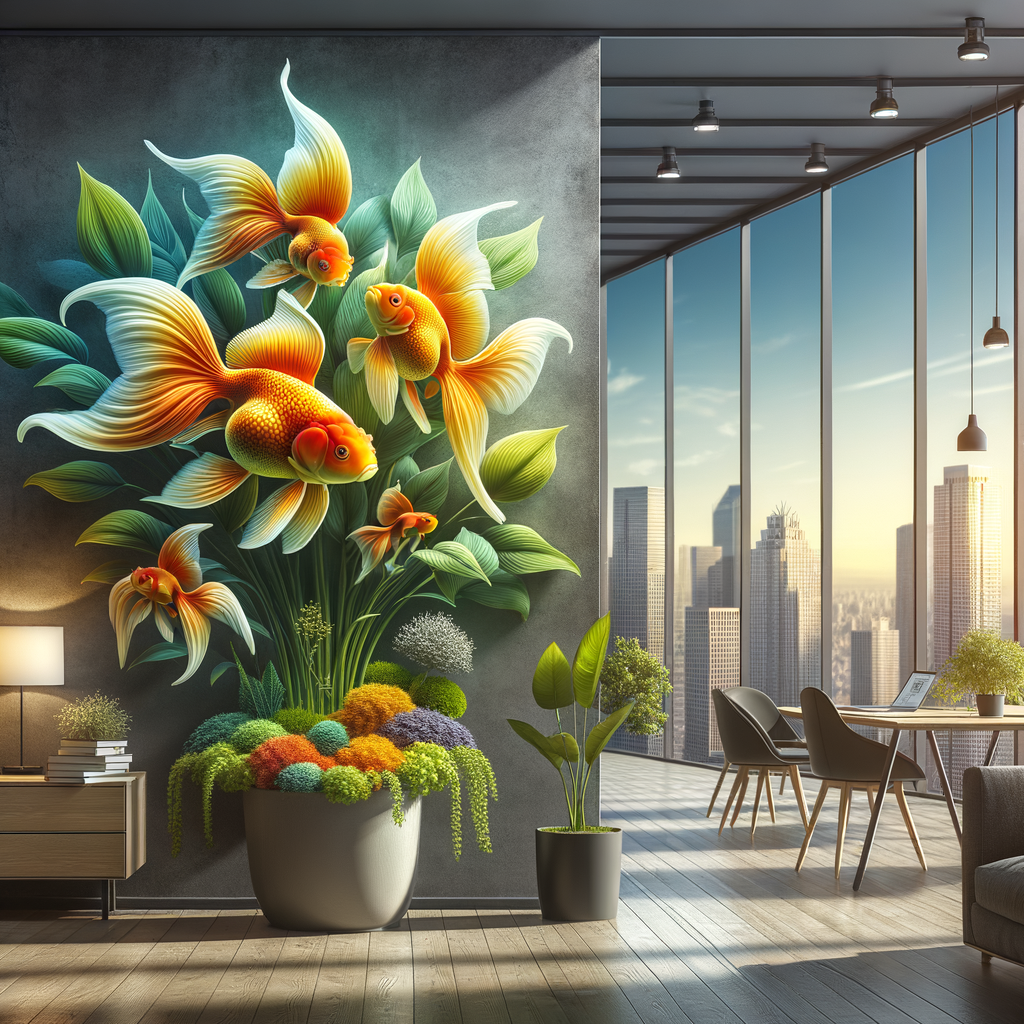
Indoor air quality and goldfish plants are two topics that may seem unrelated at first glance. However, they are closely intertwined. In this article, we will explore the importance of indoor air quality, introduce you to the fascinating world of goldfish plants, and explain why indoor plants, particularly goldfish plants, are essential for maintaining good air quality.
Indoor air quality refers to the air quality within and around buildings and structures, especially as it relates to the health and comfort of building occupants. Poor indoor air quality can lead to various health issues, including allergies, asthma, and even more serious conditions. It is affected by a range of factors, including pollutants, ventilation, humidity, and temperature.
Why Indoor Plants are Essential for Good Air Quality
Indoor plants play a crucial role in improving air quality. They absorb carbon dioxide and release oxygen through photosynthesis, helping to increase oxygen levels in the home. Moreover, some plants, like the goldfish plant, can absorb harmful pollutants, such as formaldehyde, benzene, and xylene, from the air. These pollutants can come from various sources, including cleaning products, paint, and furniture. By absorbing these pollutants, indoor plants help to purify the air and create a healthier living environment.
In the following sections, we will delve deeper into the world of goldfish plants, discussing their benefits, care requirements, and how they compare to other air purifying plants. Stay tuned to learn how you can boost your indoor air quality with goldfish plants.
Detailed Analysis of Goldfish Plants
Goldfish plants, scientifically known as Columnea gloriosa, are fascinating indoor plants that are known for their unique characteristics. Let’s delve into the physical characteristics of these plants.
Physical Characteristics of Goldfish Plants
Goldfish plants are unique and interesting, with several distinct physical characteristics. Let’s explore these in detail.
- AppearanceThe goldfish plant is named for its vibrant, orange-red flowers that resemble leaping goldfish. The leaves are dark green, glossy, and elongated, creating a beautiful contrast with the bright flowers.
- Size and Growth PatternGoldfish plants typically grow to be about 3 feet long. They have a trailing growth pattern, making them perfect for hanging baskets. They grow best in warm, humid environments and can thrive indoors with the right care.
- Flowering and Fruiting HabitsGoldfish plants bloom throughout the year, with the most prolific flowering occurring in the spring and summer. The flowers are tube-shaped and hang in clusters, creating a stunning display. These plants do not typically produce fruit.
Understanding these physical characteristics can help you provide the best care for your goldfish plant, ensuring it thrives and continues to purify your indoor air.
| Characteristic | Description |
|---|---|
| Appearance | Orange-red flowers, dark green glossy leaves |
| Size and Growth Pattern | Up to 3 feet long, trailing growth pattern |
| Flowering and Fruiting Habits | Blooms throughout the year, does not produce fruit |
These are the key physical characteristics of goldfish plants. In the next section, we will explore how these plants can improve indoor air quality.
Goldfish Plants and Air Quality
Goldfish plants, also known as Columnea gloriosa, are not only beautiful additions to your indoor garden but also serve a significant role in improving indoor air quality. Let’s delve into how these plants contribute to cleaner air and the scientific research that supports these benefits.
-
- How Goldfish Plants Improve Indoor Air Quality
Goldfish plants are known for their ability to purify the air. They do this by absorbing harmful toxins present in the air, such as formaldehyde, benzene, and trichloroethylene. These toxins are commonly found in homes and offices, released by everyday items like furniture, carpets, and electronic devices.
Goldfish plants take in these toxins through tiny pores in their leaves, then break them down and release them back into the air as harmless byproducts. This process not only cleans the air but also enriches it with oxygen, making the environment healthier for us to breathe.
-
- Scientific Studies Supporting the Benefits of Goldfish Plants
Several scientific studies have highlighted the air purifying abilities of goldfish plants. One such study conducted by NASA in 1989, known as the Clean Air Study, found that certain indoor plants, including the goldfish plant, can effectively remove toxic agents from the air, improving its overall quality.
Another study published in the Journal of Environmental Health Science & Engineering in 2015 confirmed these findings. The research indicated that goldfish plants could reduce the levels of formaldehyde in the air by up to 70% in a 24-hour period.
In conclusion, goldfish plants not only add aesthetic value to your indoor spaces but also contribute significantly to improving indoor air quality. By incorporating these plants into your home or office, you can create a healthier and more pleasant environment.
Benefits of Goldfish Plants
Goldfish plants are not just beautiful to look at, they also offer numerous health benefits. These plants are known to significantly improve the quality of indoor air and reduce pollution. Let’s dive deeper into these benefits.
Health Benefits
Goldfish plants are known for their health benefits, particularly in improving the quality of the air we breathe indoors. Here are two key benefits:
-
- Improvement in Indoor Air Quality
Goldfish plants are excellent at purifying the air in your home. They absorb harmful toxins from the air, such as formaldehyde and benzene, which are common in many household products. By removing these toxins, the plants improve the overall quality of the indoor air. A study by NASA found that houseplants like the Goldfish plant can remove up to 87% of air toxins in 24 hours. This makes the air in your home cleaner and healthier to breathe.
-
- Reduction in Indoor Air Pollution
Indoor air pollution is a serious issue that often goes unnoticed. It can be caused by a variety of factors, including dust, mold, and chemicals from household products. Goldfish plants help combat this problem by absorbing these pollutants. They act as natural air filters, reducing the level of indoor air pollution. This leads to a healthier living environment, especially for those with allergies or respiratory issues.
In conclusion, Goldfish plants not only add beauty to your home, but they also improve your health by purifying the air. By incorporating these plants into your home, you can enjoy a cleaner, healthier indoor environment.
Aesthetic Benefits
Goldfish plants do not only offer health benefits, but they also provide aesthetic advantages that can enhance your indoor space. Let’s delve into these benefits:
-
- Enhancement of Indoor Decor
Goldfish plants, with their vibrant orange flowers that resemble swimming goldfish, can add a pop of color and life to any room. Their lush green leaves and unique blossoms can complement various interior design styles, from minimalist to rustic. The goldfish plant is not just a plant; it’s a living piece of decor that can make your space more inviting and visually appealing.
-
- Contribution to a Relaxing Environment
Studies have shown that being around plants can help reduce stress and create a calming environment. The presence of goldfish plants in your indoor space can contribute to a relaxing ambiance. Their natural beauty can help create a peaceful environment, perfect for unwinding after a long day or for focusing on work or study. Plus, the simple act of caring for these plants can be a therapeutic activity that promotes relaxation and mindfulness.
In conclusion, goldfish plants are not just air purifiers. They are also beautiful additions to your indoor decor that can help create a relaxing environment. So, why not add a goldfish plant to your indoor space and enjoy these aesthetic benefits?
Goldfish Plants Indoor Care
Goldfish plants are a fantastic addition to any indoor space. They not only enhance the aesthetic appeal of your home but also purify the air. However, to keep these plants healthy and thriving, it’s essential to provide them with the right care. Here are some key aspects to consider:
-
Lighting Requirements
Goldfish plants love bright, indirect light. A spot near a north or east-facing window is ideal. However, too much direct sunlight can scorch the leaves, causing them to turn yellow and drop off. If you notice this happening, move your plant to a slightly shadier spot.
-
Watering Schedule
Watering is a crucial part of goldfish plant care. These plants prefer their soil to be consistently moist but not waterlogged. A good rule of thumb is to water them when the top inch of soil feels dry to the touch. Overwatering can lead to root rot, a common plant disease.
-
Soil and Fertilizer Needs
Goldfish plants thrive in well-draining soil. A mix of peat moss, perlite, and vermiculite works well. As for fertilizers, a balanced houseplant fertilizer applied every two weeks during the growing season (spring and summer) will keep your plant healthy. Remember to reduce feeding during the dormant winter months.
-
Common Pests and Diseases
Like any houseplant, goldfish plants can be susceptible to pests and diseases. Common issues include spider mites, aphids, and root rot. Regularly inspect your plant for signs of trouble, such as yellowing leaves or a sticky residue on the plant or nearby surfaces. If you spot any problems, treat them promptly to prevent further damage.
In conclusion, goldfish plants are a wonderful addition to any indoor space. With the right care, they can thrive and bring joy and clean air to your home. Remember, every plant is unique and may require slight adjustments to these care guidelines. Happy planting!
Comparison of Goldfish Plants with Other Air Purifying Plants
Goldfish plants are known for their air-purifying abilities. But how do they compare with other popular air-purifying plants? Let’s take a closer look.
- Goldfish Plants vs. Spider Plants
Spider plants are famous for their ability to remove toxins from the air. However, goldfish plants have a slight edge over spider plants. Goldfish plants not only purify the air but also add a splash of color to your indoor space with their vibrant orange flowers. On the other hand, spider plants are easier to care for, making them a better choice for beginners.
- Goldfish Plants vs. Snake Plants
Snake plants are another popular choice for air purification. They are known for their ability to release oxygen at night, making them a great choice for bedrooms. Goldfish plants, however, do not have this ability. Yet, they make up for it with their beautiful blooms and air-cleaning properties. Snake plants are more drought-tolerant, while goldfish plants require regular watering.
- Goldfish Plants vs. Peace Lilies
Peace lilies are excellent at removing toxins from the air, and they also bloom beautiful white flowers. Goldfish plants, with their unique goldfish-shaped flowers, offer a more exotic look. Both plants require similar care, including moderate watering and indirect light. However, peace lilies are slightly more sensitive to overwatering than goldfish plants.
| Plant | Air Purifying Ability | Care Level |
|---|---|---|
| Goldfish Plant | High | Medium |
| Spider Plant | High | Low |
| Snake Plant | High | Low |
| Peace Lily | High | Medium |
In conclusion, while each plant has its unique benefits and care requirements, goldfish plants offer a unique combination of air purification and vibrant aesthetics. Choose the one that best fits your lifestyle and home decor.
Conclusion: Boost Your Indoor Air Quality with Goldfish Plants
As we conclude our discussion on goldfish plants, let’s take a moment to reflect on the key points we’ve covered. The goal is to provide you with a comprehensive understanding of how these vibrant plants can significantly enhance your indoor air quality.
-
- Recap of the Benefits of Goldfish Plants
Goldfish plants, with their unique, vibrant blooms and lush foliage, are more than just visually appealing. They are a powerhouse when it comes to purifying indoor air. They absorb harmful toxins like benzene and formaldehyde, which are common in indoor environments due to various household products. This absorption process helps to cleanse the air, making it healthier for you and your family.
Moreover, goldfish plants contribute to a more humid indoor environment, which can be beneficial, especially in dry seasons or climates. They release moisture into the air, a process known as transpiration, which can help alleviate dry skin, dry cough, and even some respiratory conditions.
-
- Final Thoughts on Improving Indoor Air Quality
Improving indoor air quality is a crucial aspect of maintaining a healthy living environment. While there are various ways to achieve this, incorporating air-purifying plants like the goldfish plant is a natural, cost-effective, and aesthetically pleasing method.
Remember, while goldfish plants are excellent at purifying air, they should not be the only measure you take. Regular cleaning, good ventilation, and reducing the use of chemical-based products also play a significant role in maintaining good indoor air quality.
In conclusion, goldfish plants are a fantastic addition to any indoor space. Not only do they add a touch of natural beauty, but they also work tirelessly to improve the air you breathe. So, why not consider adding a goldfish plant to your indoor plant collection? It’s a small step towards a healthier, happier home.
